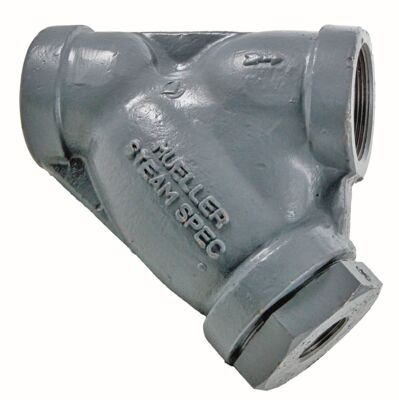

In any fluid handling system, cleanliness is critical. One of the simplest and most effective ways to protect your pumps, valves, meters, and regulators from damage caused by debris is the use of a wye strainer.
Often overlooked, wye strainers play a vital role in extending equipment life, reducing downtime, and improving overall system reliability.
What Is a Wye Strainer?
A wye strainer is a mechanical filter that removes unwanted solids from flowing liquids, gases, or steam. It features a perforated or mesh filtering element housed inside a “Y”-shaped body, hence the name.
The angled leg of the strainer contains a screen, and some have a blow-off port for cleaning or flushing out trapped particles. This design allows for inline installation with minimal pressure drop.
Why Wye Strainers Matter
1. Protect Downstream Equipment
Wye strainers are typically installed upstream of:
-
Control valves
-
Pumps
-
Heat exchangers
-
Flow meters
-
Nozzles and spray systems
By filtering out rust, scale, pipe slag, and other contaminants, wye strainers prevent clogging, erosion, and mechanical damage, preserving the integrity and efficiency of expensive equipment.
2. Support Smooth Operations
Inconsistent flow or pressure caused by debris buildup can cause process instability. Wye strainers help maintain:
-
Uniform flow rate
-
Reduced maintenance interruptions
-
Improved product quality in fluid systems
3. Enable Cost Savings
A small investment in a wye strainer prevents much more costly repairs or unplanned shutdowns. They are especially crucial in:
-
Chemical processing
-
Power generation
-
Food & beverage plants
-
Steam systems
Typical Applications
-
Steam lines: Capture condensate and debris before control valves.
-
Pump protection: Prevent cavitation and seal wear.
-
Irrigation systems: Block sediment from clogging spray heads.
-
HVAC systems: Remove rust from chilled water loops.
-
Oil & gas pipelines: Prevent sand and grit from entering sensitive instruments.
Material Options & Specifications
Wye strainers are available in various materials to match the media and service conditions:
-
Bronze or brass: For potable water and non-corrosive systems
-
Carbon steel: For oil, gas, and steam
- Cast & Ductile Iron: For oil, gas, and steam
-
Stainless steel: For corrosive and sanitary environments
-
PVC or CPVC: For chemical and low-pressure applications
They are manufactured to industry standards like:
-
ANSI B16.34
-
ASTM
-
MSS SP-71
-
ASME Section VIII
Maintenance Tips
-
Regular inspection of the screen is critical in dirty systems.
-
Use a blow-off valve for easy cleaning without disassembly.
-
Ensure the correct mesh size is selected for your application; too fine may clog too easily, too coarse may allow damaging particles through.
Wye Strainer vs. Basket Strainer
| Feature | Wye Strainer | Basket Strainer |
|---|---|---|
| Installation | Horizontal or vertical | Horizontal only |
| Debris load capacity | Lower | Higher |
| Cleaning | Often manual or blow-down | Easier to service, top cover |
| Best for | Low-flow or intermittent use | High-flow, continuous duty |
The Bottom Line
Wye strainers are a first line of defense in a piping system. Simple, compact, and effective, they’re an essential component that protects critical assets and ensures reliable system performance.
Whether you’re specifying a new system or upgrading old infrastructure, choosing the right wye strainer will save money, time, and future headaches.
Need help selecting the right strainer?
At Hayward Pipe & Supply Co., we offer a wide range of wye strainers in brass, bronze, iron, steel, stainless steel, PVC, CPVC, and other alloys.

